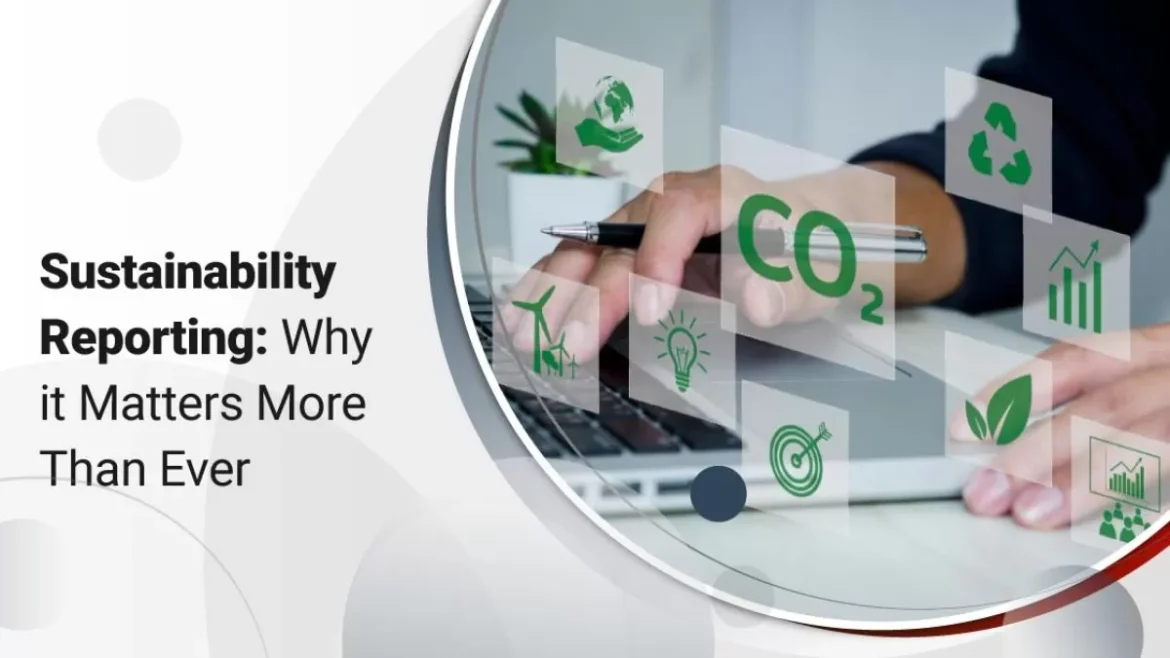In today’s world, where environmental concerns and social responsibility are at the forefront of global discussions, sustainability reporting has become a vital tool for organizations aiming to demonstrate their commitment to sustainable practices. Whether you’re a business owner, a stakeholder, or simply someone interested in the impact of corporate activities on our planet, understanding sustainability reporting is essential. This blog will explore what sustainability reporting is, why it’s important, and how organizations can effectively implement it.
What is Sustainability Reporting?
Sustainability reporting refers to the process by which organizations disclose information about their environmental, social, and governance (ESG) performance and impacts. Unlike traditional financial reporting, which focuses on economic performance, sustainability reporting provides a comprehensive view of how a company’s operations affect the environment and society.
Key Components of Sustainability Reporting:
- Environmental Impact: Includes data on energy consumption, greenhouse gas emissions, waste management, and resource usage.
- Social Responsibility: Covers aspects such as labor practices, community engagement, human rights, and employee well-being.
- Governance: Details on corporate governance practices, ethical conduct, transparency, and risk management.
Why is Sustainability Reporting Important?
- Transparency and Accountability: Sustainability reporting promotes transparency by revealing how a company’s activities impact the environment and society. This transparency builds trust with stakeholders, including customers, investors, and the community.
- Risk Management: By identifying and addressing environmental and social risks, companies can mitigate potential negative impacts and enhance their resilience against future challenges.
- Competitive Advantage: Companies that actively engage in sustainability reporting and demonstrate strong ESG performance often enjoy a competitive edge. They attract environmentally and socially conscious consumers and investors, differentiating themselves from competitors.
- Regulatory Compliance: With increasing regulations and standards surrounding sustainability, reporting helps companies stay compliant with legal requirements and avoid potential fines or sanctions.
- Enhanced Reputation: A commitment to sustainability can significantly enhance a company’s reputation, leading to increased brand loyalty and positive public perception.
How to Start with Sustainability Reporting
Implementing an effective sustainability reporting process involves several key steps:
1. Define Your Reporting Goals
Before diving into data collection and analysis, it’s crucial to define what you want to achieve with your sustainability report. Are you aiming to improve transparency, meet regulatory requirements, or showcase your commitment to sustainability? Clear goals will guide your reporting strategy.
2. Identify Key Metrics and Indicators
Determine which environmental, social, and governance metrics are most relevant to your organization and stakeholders. Common indicators include carbon footprint, water usage, employee turnover rates, and community engagement initiatives.
3. Collect and Analyze Data
Gather data from various sources within your organization, such as energy bills, waste management reports, and employee surveys. Ensure the data is accurate and up-to-date. Use this information to analyze your sustainability performance and identify areas for improvement.
4. Choose a Reporting Framework
Several frameworks and standards are available for sustainability reporting, including:
- Global Reporting Initiative (GRI): Provides a comprehensive set of standards for reporting on a wide range of ESG topics.
- Sustainability Accounting Standards Board (SASB): Focuses on industry-specific sustainability metrics.
- Task Force on Climate-related Financial Disclosures (TCFD): Offers guidelines for reporting on climate-related financial risks and opportunities.
Select a framework that aligns with your reporting goals and stakeholder expectations.
5. Prepare and Publish the Report
Create a report that clearly communicates your sustainability performance, achievements, and areas for improvement. Ensure it is accessible, engaging, and easy to understand. Consider including case studies, infographics, and testimonials to highlight key points.
6. Engage with Stakeholders
Share your report with stakeholders and seek their feedback. Engaging with stakeholders helps build trust and demonstrates your commitment to addressing their concerns and expectations.
7. Continuously Improve
Sustainability reporting is not a one-time activity but an ongoing process. Use feedback and performance data to refine your sustainability strategies and reporting practices. Regularly update your report to reflect new goals, achievements, and challenges.
Challenges and Solutions
Implementing sustainability reporting can come with challenges, such as data collection difficulties, lack of standardized metrics, and resource constraints. However, these challenges can be addressed by:
- Investing in Technology: Use reporting software and tools to streamline data collection and analysis.
- Training and Education: Provide training for staff involved in sustainability reporting to ensure they understand best practices and standards.
- Seeking Expertise: Collaborate with sustainability consultants or experts to navigate complex reporting requirements and improve report quality.
Conclusion
Sustainability reporting is more than just a trend; it’s a critical component of modern business practice. By embracing transparency, accountability, and continuous improvement, organizations can not only meet regulatory and stakeholder expectations but also drive positive change for the environment and society. Whether you’re starting from scratch or looking to enhance your current practices, effective sustainability reporting can pave the way for a more sustainable and responsible future.

